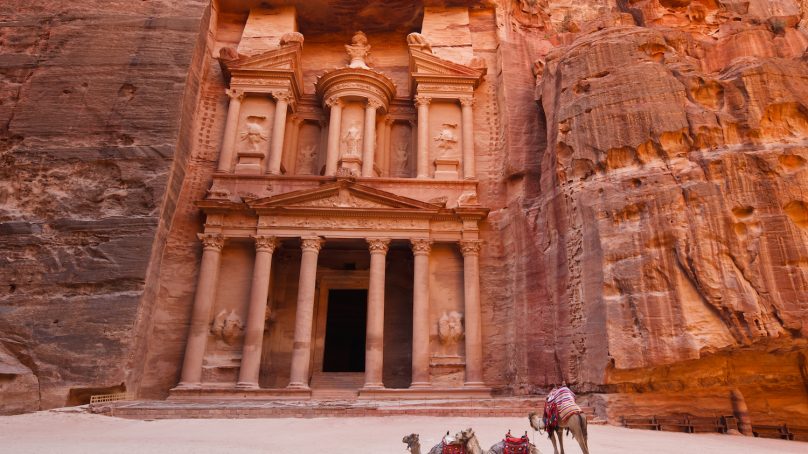The Jordan Tourism Board (JTB) officially announced that visitor arrivals from GCC nations reached record-breaking levels throughout 2024.
Overnight GCC visitors totaled 1.32 million in 2024, reflecting a substantial 15 percent increase from 1.15 million visitors recorded during the previous 2023 travel year. This significant increase represents one of the highest annual GCC visitor counts, reinforcing Jordan’s reputation as a leading destination for Gulf travelers. Additionally, this surge underscores the success of Jordan’s strategic tourism initiatives, which continuously attract visitors seeking diverse cultural and leisure experiences across the country. The average length of stay saw noticeable growth across all GCC markets, demonstrating a shift toward longer vacations and deeper regional exploration. Notably, extended stays were particularly evident during peak summer months and holiday periods, as visitors combined multiple destinations within customized itineraries.
Strategic tourism growth and market trends
“The outstanding 2024 results reflect our targeted GCC market strategies and the robust tourism connections between Jordan and Gulf nations. Furthermore, the steady growth in visitor arrivals and longer stays indicates that Jordan’s diverse offerings deeply resonate with GCC travelers seeking memorable experiences,” said Dr. Abdelrazzak Arabiyat, managing director of the Jordan Tourism Board.
Saudi Arabia led the GCC market with 1.158 million overnight visitors in 2024, marking a 17 percent increase from 985,904 visitors recorded in 2023. Summer 2024 proved particularly strong, with Saudi visitor arrivals peaking at 156,400 in July and 141,007 in August, reinforcing Jordan’s seasonal appeal. This surge in summer travel highlights Jordan’s increasing popularity as an alternative to traditional destinations, offering moderate highland temperatures and breathtaking landscapes. Furthermore, GCC visitor growth remained steady, with July arrivals rising from 146,474 in 2023 to 172,494 in 2024, reflecting consistent demand.
GCC market insights and emerging trends
Similarly, August visitor numbers grew from 165,593 in 2023 to 167,031 in 2024, reaffirming Jordan’s sustained appeal among GCC tourists. Additionally, Kuwait remained Jordan’s second-largest GCC source market, contributing 72,784 visitors, while the UAE recorded 18,378 visitors, reflecting an 11 percent increase.
Bahrain and Oman contributed 34,309 and 22,716 visitors respectively, with Oman showing particularly strong 12 percent year-over-year growth. Qatar followed closely behind with 16,081 visitors. Tour operators played a crucial role in extending visitor stays, increasing spending, diversifying itineraries and enhancing overall experiences across Jordan’s tourism sector.
“The transformation we’ve seen in 2024 marks a new trend,” said Dr. Arabiyat. “We’re witnessing a fundamental shift in how GCC visitors experience Jordan, with many choosing to explore multiple destinations within the country and engaging in a wider range of activities than ever before. This has been particularly evident in the growing interest in experiential tourism, from luxury desert camping to cultural immersion experiences.”
Jordan’s tourism boom
The Dead Sea region emerged as a major success story in 2024, with its luxury resorts and wellness offerings attracting high-value GCC tourists. The area’s unique natural therapeutic properties, world-class spa facilities and premium accommodations offer an exciting proposition for wellness-focused travelers seeking rejuvenation.
Moreover, Amman’s position as a modern urban destination strengthened considerably in 2024, with the city’s medical tourism sector experiencing remarkable growth throughout the year. The capital’s advanced healthcare facilities, coupled with its luxury shopping districts and high-end accommodations, attracted significant GCC visitors.
Furthermore, the UNESCO World Heritage site of Petra continued captivating GCC families, with increased visitation during peak holiday periods and school vacation seasons. The ancient city’s appeal was enhanced by new interpretive facilities and improved visitor services. Thus, making it more accessible and engaging for families with children. Additionally, the introduction of evening experiences and specialized cultural programs helped extend visitor stays, encouraging deeper exploration of Petra.
In addition, Wadi Rum’s luxury desert camps recorded strong occupancy rates, reinforcing its position as a premium adventure tourism destination. The desert region offered everything from high-end glamping experiences to exclusive desert dining and stargazing programs.
Rising Interest from GCC visitors
The northern regions of Ajloun and Jerash experienced rising GCC visitor interest, particularly during the summer months when cooler climates provided a refreshing escape. Furthermore, these historical sites, combined with the region’s pleasant climate and natural beauty, created an accessible alternative to traditional summer destinations. Additionally, the development of new tourist facilities and interactive historical experiences enhanced the appeal of these cultural landmarks for Gulf travelers.
Moreover, the Jordan Tourism Board anticipates continued GCC tourism growth, supported by strong air connectivity and strategic airline partnerships. The recent expansion of flight routes and increased flight frequencies has made Jordan more accessible than ever for GCC travelers seeking seamless travel experiences. Additionally, visa-free entry for GCC nationals and short flight times, averaging two-three hours, continue positioning Jordan as an ideal destination for weekend getaways and extended vacations.
















